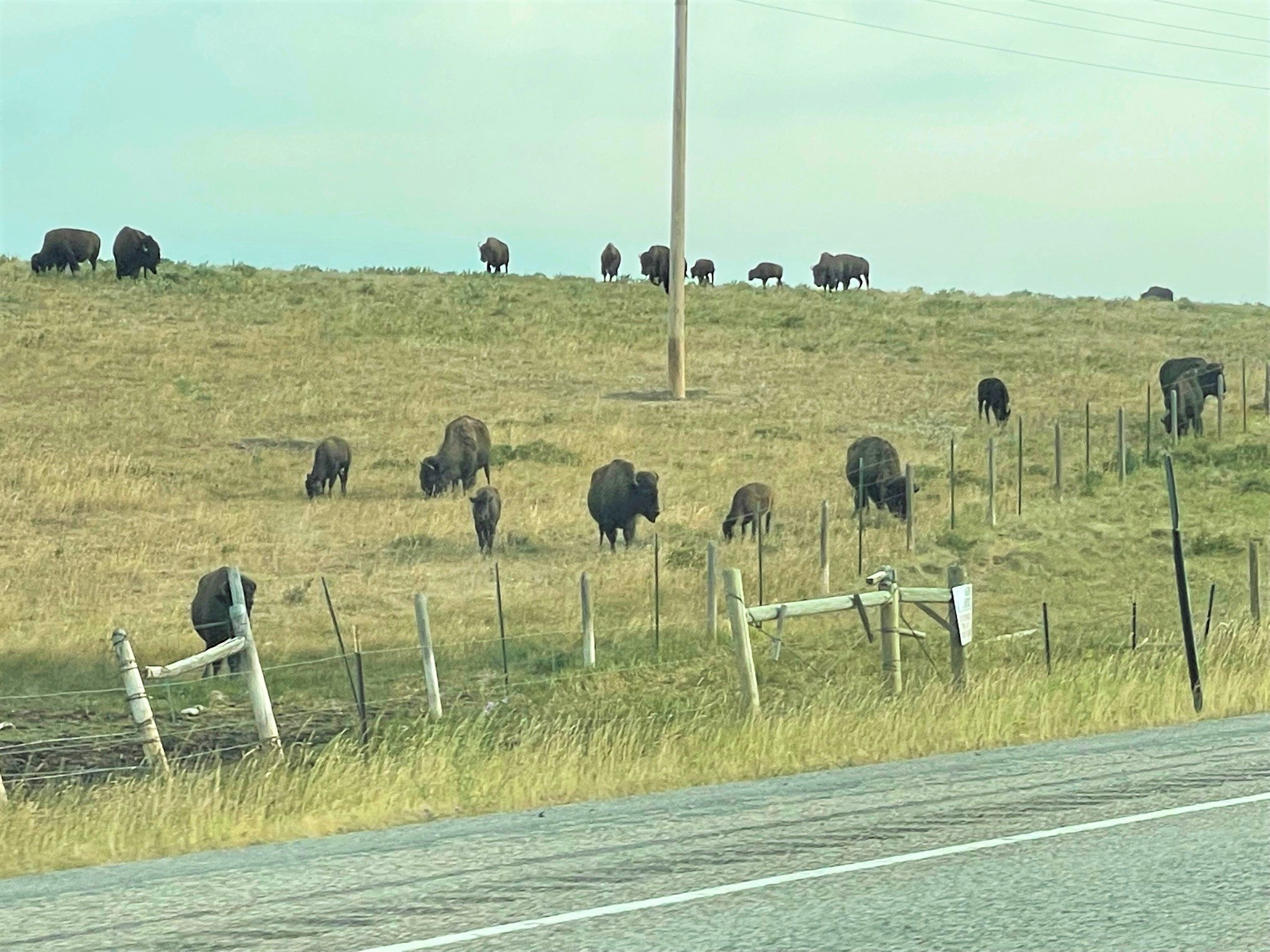On the Road Again - The Hi-Line
One thing I've learned about itinerary planning for this Epic Road Trip is different ways to break up a very long drive. My original strategy was to plan layovers (stops) near the halfway point of each long leg. But Steve the demon driver kept insisting that after 8 hours, it all felt the same - so it was not a problem for him to drive 9, 10, or even 11 hours in a day. We did do an 11 hour drive from Austin to Santa Fe, and it wasn't nearly as difficult as I feared. I still had a rule that I wanted to arrive during daylight if the destination was not right on a major highway. Other than that, I was happy to skip or change our layovers to give us more time in key destinations.
So with this revised strategy, we took a fresh look at our itinerary, which had two very long legs to cover. The first involved crossing nearly the whole state of Montana. We decided to drop the planned layover altogether. That, plus the serendipity of our maps app, had us driving US Highway 2 - the famous Hi-Line - across northern Montana.
But first, there was a surprising sight as we left East Glacier: a large herd of rather young-looking bison.
This was Bison Creek Ranch, and these 80-ish bison will be released next year onto the Blackfeet Reservation, where they can also roam into Glacier National Park. We were fascinated to learn that these bison were genetic descendants of bison that originally roamed the park's lands, and that we know this thanks to a University of Montana graduate student in archaeology, who did his thesis on the history of bison in Glacier. His research sounded like one of those backcountry adventures you read about in Outside magazine.
Anyway, soon after Bison Creek Ranch, we were on the Hi-Line, and leaving the Rocky Mountains for a whole different kind of Montana.
The Hi-Line ran alongside the historic Great Northern Railway (now called the Burlington Northern and Santa Fe Railway). The landscape was mostly golden wheat fields as far as the eye can see. The horizon was flat except for silos and grain elevators. And sometimes trains. It was easy to see how Montana gained the nickname Big Sky Country.
Every 80-100 miles we'd pass what one writer called a "blinkstop" town, usually with a gas station, a diner, and maybe a motel. Sometimes they were only on one side of the highway. I didn't get any photos because, well, they were behind us in a blink.
Steve enjoyed the drive. We even paced a few trains!
After about six hours on the Hi-Line, we turned southeast to catch the Interstate. At first we thought we were seeing an amazingly long train; then we realized it was a line of freight cars sitting on overgrown train tracks, stretching on for many miles, with occasional gaps where they crossed country roads. I think it must have been 20 miles or more of parked railcars. Apparently, this is how BNSF stores railcars that are not used/needed. And this 20-ish mile stretch - about 2,000 railcars - is significantly down from 10 years ago, when idle BNSF railcars covered 87 miles of Montana train tracks. Mind-blowing.
We loved our time in Montana, but after a long day of driving - with no layover - it was a relief to cross that state line and know we would soon be stopping for a good night's sleep before our next adventure.


